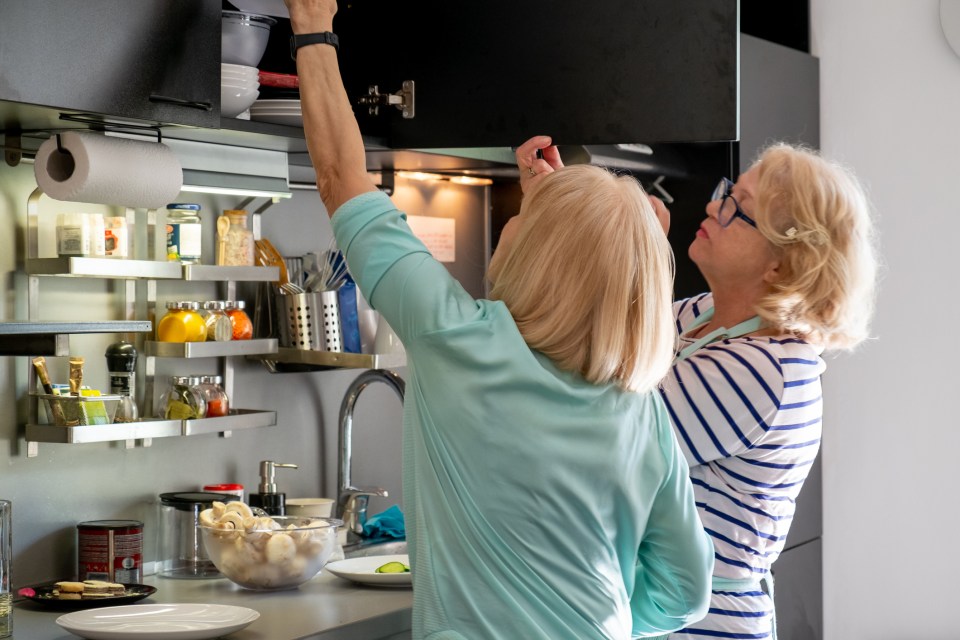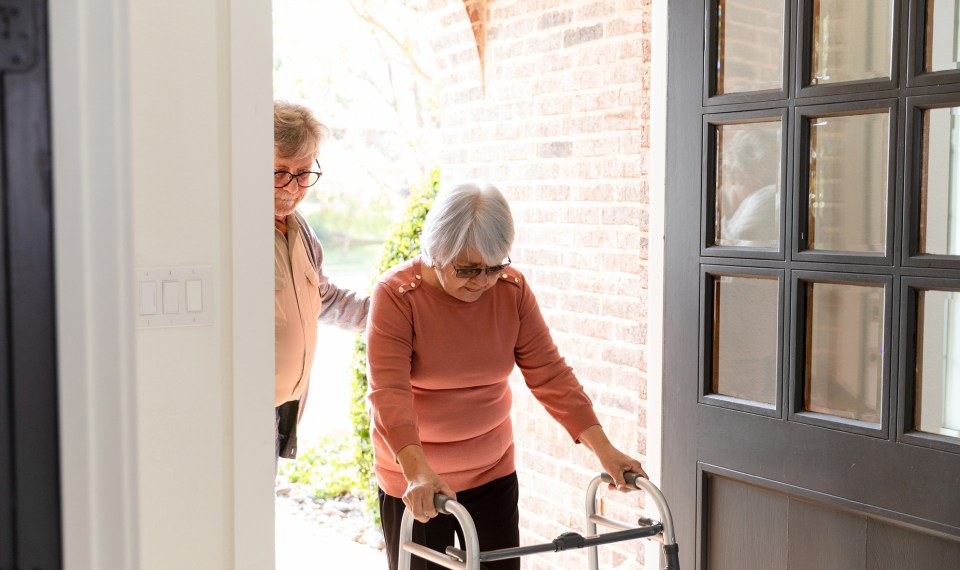If you are a senior who plans to remain in your home and age in place, it is important to make the space as safe and accessible as possible. Rooms such as the kitchen that once seemed easy to navigate can become challenging as you age.
A OnePoll survey conducted on behalf of Bosch Home Appliances found that Americans spend more than 450 hours a week in the kitchen. While this room may be the center of your home, if not properly organized, it can hold hidden dangers. But kitchen safety for seniors is possible.
Evaluating Potential Kitchen Hazards
Each year, 3 million older adults receive emergency treatment for falls, with the kitchen considered a high-risk area.
Burns are the second leading cause of home injury among seniors. Studies have shown older adults are at higher risk for burn injuries due to the aging process, comorbidities and limited financial means. Addressing safety issues in the kitchen can lower the risk of injury and help seniors stay in the home longer. You can mitigate potential dangers by:
- Clearing dish towels, potholders, and other flammable objects away from oven doors and stovetop burners.
- Making sure kitchen ventilation systems and stoves are clean and grease-free.
- Checking that smoke detectors are in working order, and consider updating to new ones with a flashing strobe light if you suffer hearing loss.
- Looking for cooking risks and considering swapping out appliances or making modifications for safety.
- Ensuring lighting is adequate. If not, upgrade overhead lighting and lighting in kitchen work areas.
- Removing kitchen rugs or at least replacing them with ones with a non-slip backing.
- Cleaning up clutter in the floor and around the room. Clear counters of unnecessary objects and place items in their proper place.
- Getting rid of chairs with wheels and other wheeled items that can slip out of place or spin.
- Rethinking your storage. Store kitchen essentials waist high and within easy reach.
- Evaluating your cookware. Replace heavy pots and pans with lighter weight ones.
Making the Kitchen More Accessible
Even if a major kitchen remodel isn’t in the budget, you can still add a few updates to make your kitchen safer and easy to navigate.
- Upgrade dated appliances with senior-friendly models. Most major appliance manufacturers make ADA (Americans with Disabilities Act) compliant appliances. Designed to make your kitchen more accessible, these products can be operated with one hand, have controls set at a specific height, reduce reaching and require force of under 5 pounds to operate knobs and controls as well as other safety features.
- Consider safer cooking options such as a ceramic top induction stove. They are easy to clean and don’t produce flames. Stoves with front-mounted controls are another option to prevent reaching across hot burners. Stoves with automatic timers shut off after a period of inactivity. Not in the market for a new stove? You can add low-temperature safety burners to your existing stove.
- Install pullout drawers in lower cabinets to make items more accessible and place heavy items in lower cabinets.
- Purchase an adjustable stool you can use when prepping foods or cooking.
- Consider swapping your current deep sink for a shallow one. A sink 6 to 8 inches in depth makes it easier to rinse plates and vegetables without reaching.
- Install corner cabinet organizers to avoid crawling or stretching to reach items in deep corner cabinets.
- Get rid of sharp corners on countertops. Rounded edges are less likely to cause injury.
- Replace slippery or waxed flooring with slip resistant vinyl or textured porcelain.
- If you have arthritis or decreased mobility, think about installing a touchless faucet.
- Retrofit existing upper cabinets with pull-down shelves to increase accessibility.
- Replace cabinet knobs with easier to use D-shape cabinet pulls.
Tips for Increasing Safety in the Kitchen
Even if your current kitchen is accessible and easy-to-use, you can still improve safety by following the below tips:
- Keep drawers and cabinet doors closed when not in use.
- Keep counters clutter-free by storing unnecessary items.
- Avoid wearing loose fitting clothing when cooking.
- Wipe up spills quickly.
- Don’t walk on freshly mopped floors; wait until completely dry.
- Unplug small appliances when not in use.
- Properly store knives and sharp items to prevent accidental injury.
- Keep an eye on food expiration dates and dispose of any food items that look or smell spoiled.
Kitchen Gadgets for Seniors
There are several kitchen gadgets for seniors that can help you function better and more safely in the kitchen, including the below items:
- Avoid a sliced finger by slipping on a pair of cut-resistant gloves before chopping or cutting.
- Protect arms and hands from burns when baking with oven rack guards.
- Prevent messy and dangerous spills from boiling pots with a silicone spill stopper that fits any pot or pan.
- For times when two hands are not enough, the clip and fill baggy rack makes it easy to fill gallon, quart, or sandwich baggies with liquid food items.
The content of this site is for informational purposes only and should not be taken as professional medical advice. Always seek the advice of your physician or other qualified healthcare provider with any questions you may have regarding any medical conditions or treatments.



